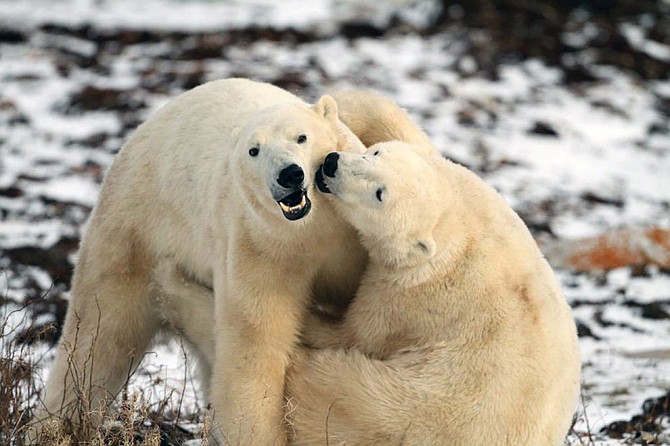HELENA, Mont. (AP) - Researchers studying the effects of climate change on polar bears are experimenting with the idea of crowdsourcing data as improving technology allows anybody with an Internet connection to monitor the animals' annual migration in Canada.
Polar bears gather at this time of year on the Hudson Bay's southwestern shore to wait for the water to freeze so they can wander the ice and hunt for seals. The migration to the Wapusk National Park in Manitoba is far enough south to make the Western Hudson Bay polar bears one of the most accessible and studied populations of the species.
This is the third season that Bozeman-based Polar Bears International and Explore.org, a project of the Annenberg Foundation, are running live webcam feeds of the annual migration. The webcams were set up to improve the education of people who know little about the Arctic nomads, Polar Bears International Executive Director Krista Wright said Tuesday.
This year, Explore.org has a new snapshot feature on its website that lets users watching the live feed capture individual images to download or share on social media sites.
In addition, a new smartphone application will let the hardy tourists who travel to Manitoba to witness the migration up close tag and upload their photos to Explore.org.
Scientists want to see whether this crowdsourcing will help them in their research on the effects of the shrinking sea ice and later freeze-ups on the polar bears' size, health and reproductive rates.
"The important point to me is that we need to explore the potential to collect data from whatever sources might be out there," said Steven Amstrup, chief scientist for Polar Bears International, in an email from Manitoba.
The polar bears, after fasting all summer and fall, gather at the park's Churchill Point in October and November to wait for the freeze-up. The cameras broadcast the gathering from fixed positions on buildings in and around the park and on one roving buggy.
They allow anybody online to watch and photograph male bears sparring and mothers walking with their young across the tundra.
Researchers will look to add the best of those photos to their collection, and compare them with photo archives going back decades to better understand changes to the bear's conditions.
The images from the video feed may not be as useful as those captured by tourists and Manitoba residents who are there, Amstrup said.
But scientists may be able to use some of those pictures to analyze how the bears' bodies are changing over time, Amstrup said.
One of the cameras is positioned at a point in the park where no visitors are allowed until the end of November, meaning the constant monitoring by Internet visitors may give researchers a variety of images from areas that others can't access, Wright said.
"Not every photo will be part of the data set, but we have the opportunity to choose the best of the photos," Wright said. "The more that we have to choose from, the better the data set is going to be."

